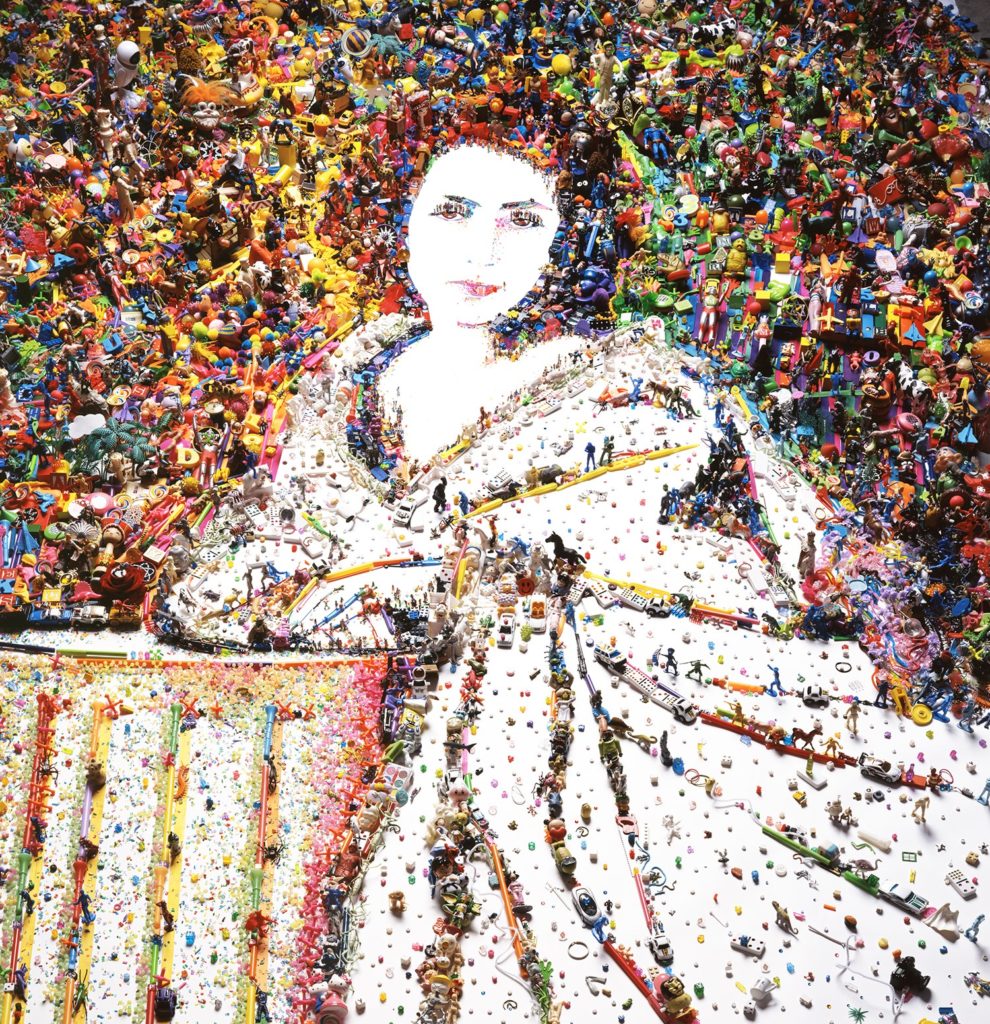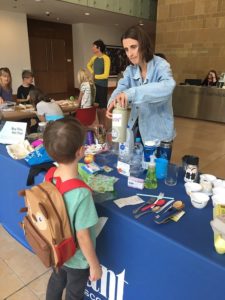
Sarah Bernhardt from Rebus, 2010, digital C-print. Purchased with funds provided by the Friends of the Palmer Museum of Art, Collection of the Palmer Museum of Art, 2011.25. © Vik Muniz, courtesy of Sikkema Jenkins & Co., New York.
In the movie, “The Graduate,” Dustin Hoffman’s character, Ben, has just graduated from college in the 1960s. He receives advice from an elder that a viable career future would be, in one word: plastics. This helpful suggestion rings hollowly in Ben’s ears.
However, many must have followed the advice. We have fabricated so much from this useful material that it is causing environmental problems now, especially in the water.
To raise awareness about the complex cultural and material nexus that is “plastic,” Wisconsin Sea Grant has collaborated with the Chazen Museum of Art at the University of Wisconsin-Madison, which is presenting, “Plastic Entanglements: Ecology, Aesthetics, Materials.”
The exhibit features art pieces by an international array of emerging and mid-career artists. In conjunction, the Wisconsin Water Library and Sea Grant staff have put together materials for students and educators that allow them to take a deeper dive into the exhibition using a scientific lens.
Anne Moser, senior special librarian with the Wisconsin Water Library, said that pre- and post-visit activities invite viewers to examine the connection between the art of plastics and the science of marine debris.
“Similar to the way the exhibition is organized around the past, the present and the future of plastic as a material, so is the science of plastic pollution in our waters,” Moser said. “Plastic is ‘cheap’ to produce, lightweight, and strong and can be processed into vastly different products. We use it in every aspect of our lives. We see microplastics everywhere today – in our beer, in our drinking water and in Arctic snow. What will the future look like with so much waste in our environment?”
In addition to producing the educational materials, Moser received a grant through the National Marine Sanctuary Foundation and the National Oceanic and Atmospheric Administration Marine Debris Program to fund bus transportation for schools and community groups to visit the museum and see the exhibit. She also provided information on the science of plastic pollution to docents who will be leading tours.
“The docents asked really good questions about plastic pollution in our waterways, and I could see the connections being made in their minds about how they could use science information when they talk with the students,” Moser said.

One of the Art Spin activities Sea Grant is providing in collaboration with the Chazen plastics exhibit.
Another aspect of the collaboration are family weekend events called Art Spins. On several weekends during the exhibition’s run, Moser and Ginny Carlton, Wisconsin Sea Grant education outreach specialist, are offering activities for families that raise awareness about plastics issues. These include examining microplastics under microscopes, demonstrating shopping alternatives to single-use plastics, playing a game centered around marine debris collection data and decorating canvas shopping bags.
“People are hearing about plastics and they’re worried about their plastic footprint,” Moser said. “People want to understand what the issues are and what alternatives they can choose. The art exhibit gives people inspiration to make some differences in their lives.”
The free exhibit opened on Sept. 13 and runs through Jan. 5, 2020. A reception and costume party will be held at the Chazen from 5:30-8:30 p.m. on Oct. 25.
To see the curriculum materials, visit the Wisconsin Water Library website. For information on associated events, visit the Chazen Museum site.
Interested teachers can contact Moser at akmoser@aqua.wisc.edu or 608-262-3069.





